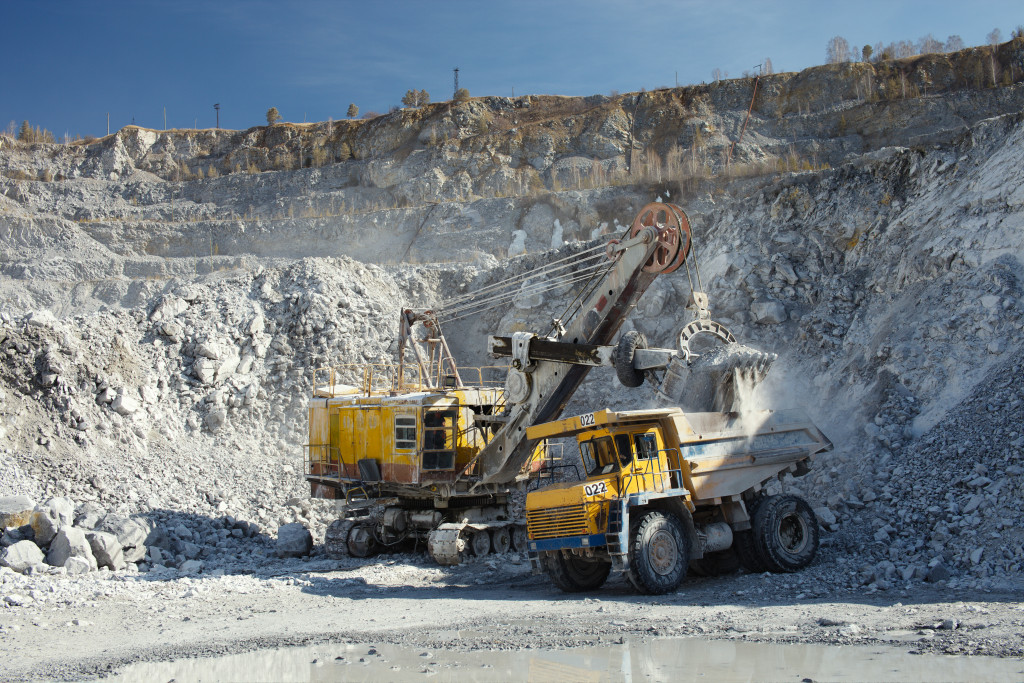- Implement strict safety protocols to protect miners and the company from potential liability.
- Develop hazard awareness programs to educate workers about risks before entering a workspace.
- Establish preventive measures such as improved ventilation or dust collection systems to reduce exposure to hazardous materials.
- Implement post-accident management plans, which include medical treatment, insurance coverage, and counseling services for affected workers.
- Ensure regular inspection and cleaning of mining equipment and stay up-to-date with industry rules and regulations to avoid costly litigation.
Mining has been one of the world’s most profitable and vital industries for centuries. It is responsible for providing resources that range from coal, oil, and gas to precious metals like gold and silver. The mining industry creates jobs, drives technological advancements, generates wealth, and produces goods essential for everyday life.
The global mining industry is worth over $3 trillion and contributes various economic benefits worldwide. Mining companies are also precious investments, generating significant returns and dividends on capital invested. For example, global gold production reached a record high of 3,238 metric tons with an estimated value of over $150 billion. This demonstrates just how profitable the mining industry can be for investors who are willing to take a risk on commodities markets.
However, mining can be a volatile sector prone to accidents, disasters, and lawsuits. If you want to protect your mining company, it is essential to have a safety management plan in place. Here are some of the top safety tips for protecting your mining company:
Worker Safety Protocols

Safety protocols are essential for mining workers to ensure their safety and well-being in a dangerous work environment. Every mining company should have strict safety protocols that protect the miners and the company from potential liability. Here are some of the most important safety protocols to implement:
Regular Safety Training
Regular training on safety protocol is essential to ensure all miners understand the risks associated with their job, how to protect themselves from harm, and what procedures to follow in an emergency. Companies should provide new employees with comprehensive safety training covering all relevant topics and periodic refresher courses for experienced workers. Companies should also consider implementing specialized safety training programs tailored to individual worksites or tasks.
Hazard Awareness Programs
Companies should create a hazard awareness program that educates workers about potential risks before they enter any given workspace. By identifying potential hazards, developing specific control measures, and providing regular reviews of these measures, companies can protect their miners from injury and improve overall productivity.
Prevention Strategies
Prevention strategies are essential to any risk management system when protecting miners against workplace hazards. Companies should establish clear guidelines for reporting accidents or incidents and robust investigation procedures following any incident. Companies can also implement preventive measures such as improved ventilation systems or dust collection systems to reduce exposure to hazardous materials and provide safer working conditions for miners.
Post-Accident Management
In the event of an accident or incident, companies must have a post-accident management plan outlining steps for responding appropriately and ensuring miners’ safety. This plan should include medical treatment options available for injured miners, insurance coverage for medical expenses, counseling services for affected workers, and other necessary resources to help them recover physically and emotionally from the experience.
Mining Equipment Maintenance

Mining equipment maintenance is essential to ensure the safety and efficiency of mining operations. Poorly maintained equipment can lead to a greater risk of injury or even death for miners and decreased productivity. Mining companies should establish comprehensive maintenance strategies for all their gear to protect workers and maximize profits.
A critical step in mining equipment maintenance is regular inspection and testing. Companies should regularly inspect their equipment for any signs of damage or wear and tear, such as cracks, dents, rust or other corrosion, loose parts, etc.
Another necessary step in mining equipment maintenance is proper lubrication and cleaning. Mining machines require a lot of lubrication to keep them running smoothly and efficiently. Companies should use the appropriate type of lubricant for each device based on its manufacturer’s recommendations and replace it as needed. Additionally, dust particles from the mines can build up in the machinery over time if it’s not cleaned regularly; this buildup can cause it to malfunction or even catch fire if left unchecked! Companies should set up a cleaning schedule that considers their work environment and develop an effective dust control plan.
Of course, preparing for replacement parts will also be necessary, especially for equipment as massive as SAG mills and crushers. High-quality discharge end liners will be essential for keeping them running optimally and protecting the miners who operate them. Businesses must ensure they have replacements to ensure continuous operations. As a result, companies should anticipate when their equipment will require parts replacements and plan to minimize downtime.
Understanding of Rules and Regulations
Finally, companies should stay up-to-date with mining industry rules and regulations. These rules are in place to protect workers, the environment, and the public from potential hazards. Companies that violate these laws can face severe penalties, so it is essential to maintain a thorough understanding of them to avoid potential litigation or fines.
Lawsuits could shut down a mining company and, in extreme cases, even cause bankruptcy. Negligence or failure to comply with safety regulations can create significant company liabilities. Companies should ensure that their legal team is knowledgeable about the current laws and regulations affecting their operations so they know how to protect themselves from costly litigation.
Final Thoughts
Protecting your mining company is essential to its success. Establishing and enforcing safety protocols, preventive strategies, effective post-accident management plans, proper maintenance of mining equipment, and understanding rules and regulations will help ensure miners’ safety while maximizing profits. Ensuring these measures are in place can help safeguard the future of your mining operation and secure its success.
